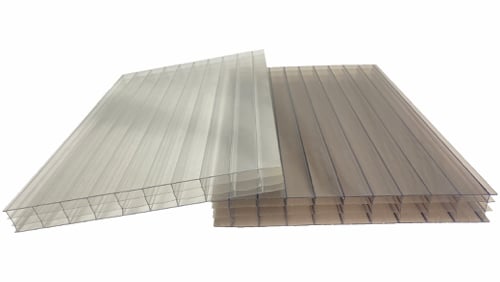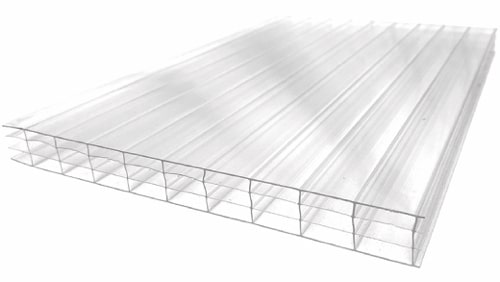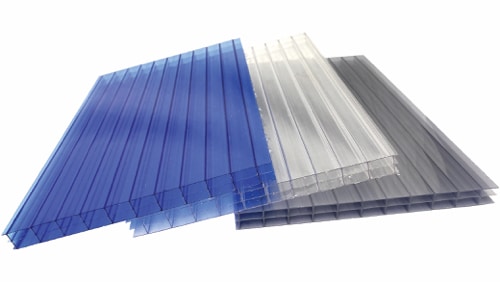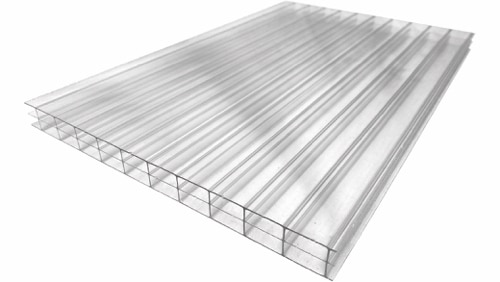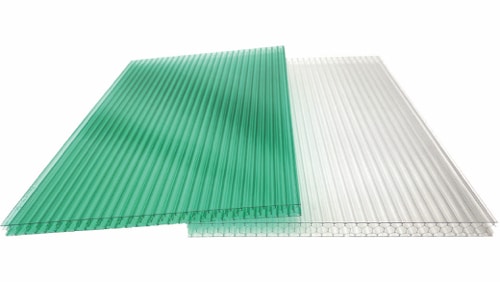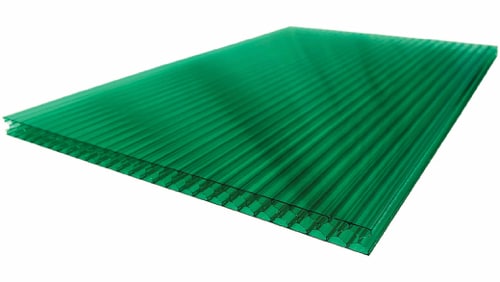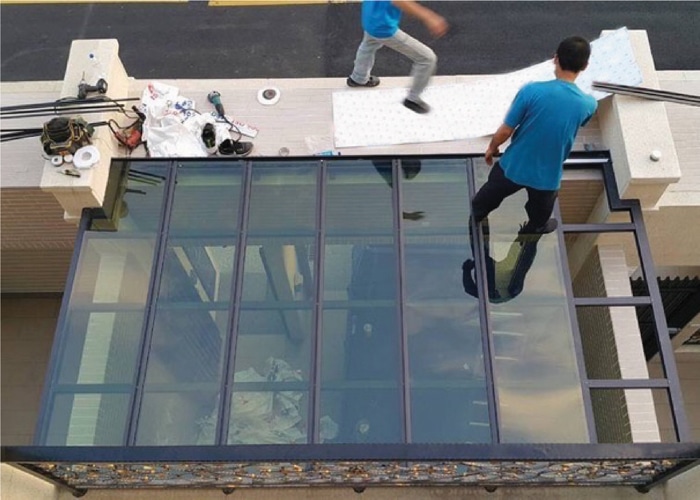Installing polycarbonate roofing sheets might seem easy at first sight; its light weight and overall lighter structure required to set up often leads to carelessness compared to setting up metal or glass roofing. Since polycarbonate sheets are what people say virtually indestructible, “brittle, handle with care stickers” aren’t exactly befitting, whereas one might see “heavy, brittle, handle with care” cautionary notes on anything related to glass, thus giving out the wrong impression that the indestructible polycarbonate sheets can be handled and installed how one sees fit.
Preparations prior to fixing polycarbonate sheets
When it comes to installing and servicing panels, always use appropriate scaffolding and proper placement to ensure even weight distribution to avoid damage. Always wear protective equipment such as protective eyewear, masks, and gloves.
It is imperative to check the surfaces where the polycarbonate sheets will be placed, although VULCAN polycarbonate sheets profiles such as Solid Flat and Multiwall come with protective PP films, which is already tougher than the standard PE film on competitors’s products; they could still be damaged by extremely sharp protrusions or dust particles from the atmosphere.
How to install Solid Flat and Embossed Polycarbonate sheets
VULCAN SOLID Flat and Embossed sheets can be installed on most existing frames made of wood, rigid PVC, aluminum or other metals. It is recommended to use neoprene or EPDM packing (never use soft PVC) to secure the sheet in its frame, rather than fixing with screws. Butyl rubber sealing strip or neutral silicone sealants are recommended.
Roof Pitch
Roof slope should always be considered in order to move water, and snow among other elements off the roof. Flat roofs are more prone to water pooling, though this is normally due to excessive span between purlins and incorrect installation, which results in sheet sag; it is imperative nonetheless, to incorporate slopes and gutters to quickly disperse any foreign matter.
- A minimum slope of more than 5% is recommended when installing.
- VULCAN polycarbonate sheets should be installed at pitch rates of 10 percent (1″:10″ slope or 5.7°) or more.
- If installed at a lower pitch, additional sealing should be applied to insure weather resistance.

Deflection Rate Under Load
Although solid flat polycarbonate sheets have high impact, tensile and flexural strength; the maximum thickness, width and length of the sheet chosen must not exceed its deflection rate under load and the structure will then be designed in accordance with these limitations.
Linear Thermal Expansion Coefficient
Although the standard deflection temperature of Polycarbonate sheets is 135°C, its mechanical strength/properties still differs at different temperatures, and thus must be taken into consideration. Sheets have to be cut accurately at predetermined lengths smaller than the dimensions of the frame and the clearance be left for expansion. The Linear Thermal Expansion Coefficient of Polycarbonate sheets is 7.0 x 10 -5 cm/cm/°C or 70.2 10 -6 m/(m K), approx. 6 times that of steel and 8 times that of glass.
Choosing the correct thickness for its intended purpose
The thickness of the sheet shall be determined according to the wind/snow load and deflection / bend radius required.
Bending Flat Profiles:
Cold Forming (Cold Bending)
Though PC sheets have high flexural strength and can be cold bent, inner stress still occurs at the bend; external loads accumulated over time must also be taken in consideration when planning. 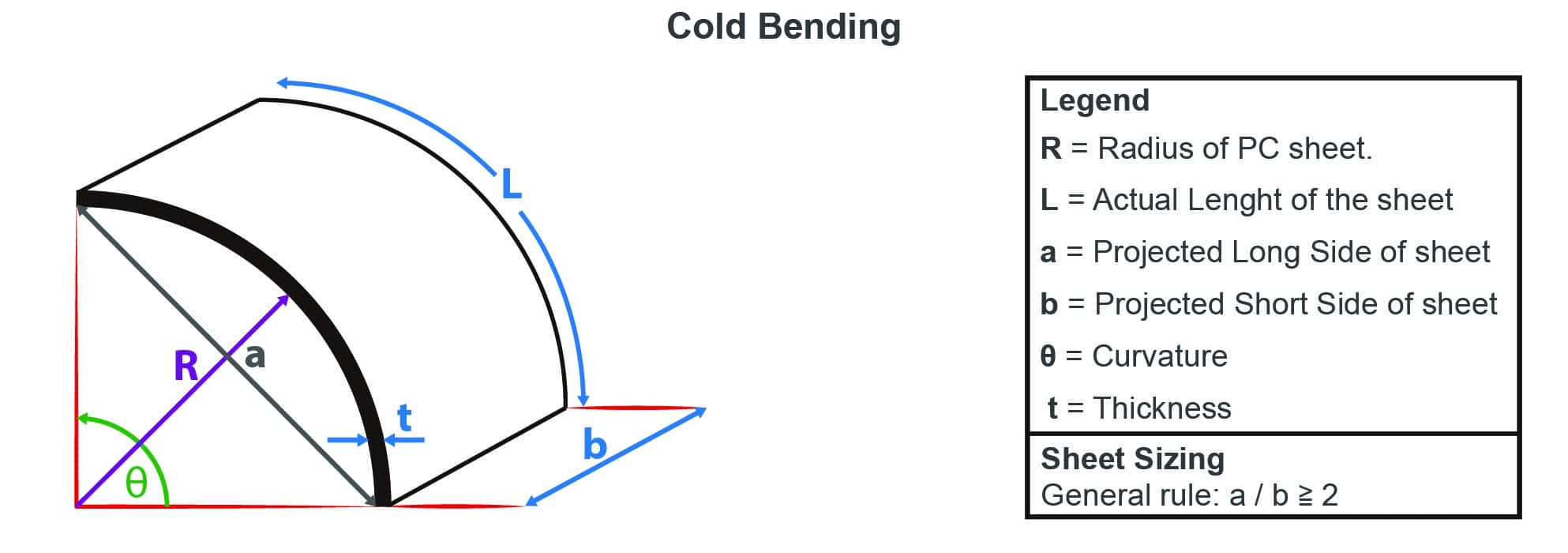
Radius (R)
- Outdoor Usage: R should be 180 times larger than the sheet thickness (t) – R ≧180 x t
- Indoor Usage: R should be 100 times larger than the sheet thickness (t) – R ≧100 x t
Curvature (θ)
- The curvature (θ) should be equal or smaller than 90° (θ ≦ 90°)
Heat Forming
When the required bend radius (R) is smaller than 180t (thickness of sheet times 180), and cannot be cold-bent, the sheet would have to be heated before bending. As a general rule, a pre-dried polycarbonate sheet can be safely heated up to 180°–190°C and at this temperature behaves in a manner that enables it to be formed into complex shapes with tight curves and deep draw.
Single Panel, Single Span, Four Sides Clamped Framing Installation:
Choosing the correct sheet size
Due to thermal expansion, VULCAN SOLID sheets have to be cut accurately at predetermined lengths smaller than the dimensions of the frame. At the end of the frame, clearance must be left for expansion.
Load should be taken in consideration when choosing the correct size for framing.
Choosing the Thickness
In order to determine the required thickness, one would have to follow local building regulations in regards to wind and snow load (when applicable).
Thermal Expansion and Contraction
Although the standard deflection temperature of Polycarbonate sheets is 135°C, its mechanical strength/properties still differs at different temperatures, and thus must be taken into consideration. The Linear Temperature Expansion Coefficient of Polycarbonate sheets is 7.0 x 10 -5 cm/cm/°C or 70.2 10 -6 m/(m K), approx. 6 times that of steel and 8 times that of glass.
Fitting Polycarbonate Roofing Sheets
Solid Flat and embossed polycarbonate sheets are usually fixed using aluminum glazing bars. Glazing bars are usually a two-piece design; the bottom piece is usually fixed on top of the purlins of a subframe, and the top piece to clamp down and sealed off after the polycarbonate sheets are placed.
Fixing Nuts and Bolts
For installation that requires fixing nuts and bolts, below are basic principles to follow. Distance between bolts and fixtures – The distance between them is determined by the polycarbonate sheet thickness.
- For sheets below 3.0mm, the distance between bolts should be within 10~20cm
- For sheets above (including) 3.0mm, the distance between bolts should be within 20~30cm.
- If fixtures are used in addition to the bolts, the distance between can be 30~50cm.
- When installed outdoors or where temperature difference exceeds ±8°C, all holes should be reamed for thermal expansion/contraction. Holes should be larger than the bolt/rivet stems by 1/16″ or 2~4mm. (i.e. a 24″ hole requires a 24-1/8″ ream; a 6″ hole requires a 6-1/32″ ream)
For more information on installing polycarbonate roofing sheets, email us at [email protected].
Related Products:
Clear Corrugated Roofing Sheet | Valuview ROMA Series | Vulcan Plastics

